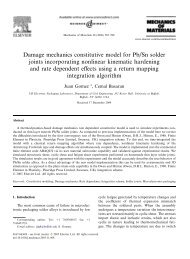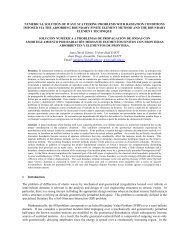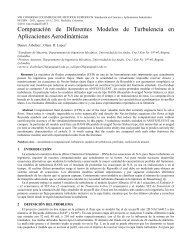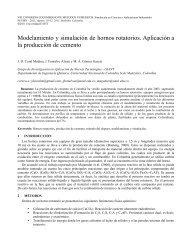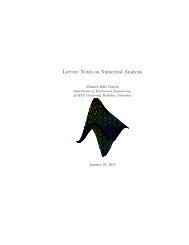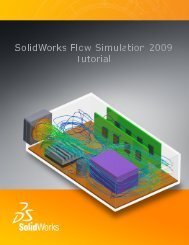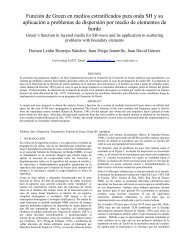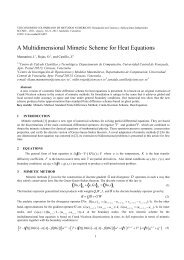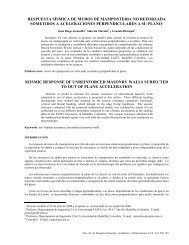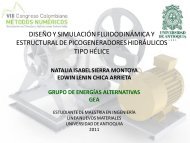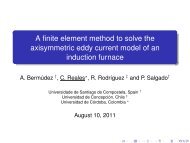Workbench Mechanical - Introduction to Contact
Workbench Mechanical - Introduction to Contact
Workbench Mechanical - Introduction to Contact
You also want an ePaper? Increase the reach of your titles
YUMPU automatically turns print PDFs into web optimized ePapers that Google loves.
<strong>Workbench</strong> <strong>Mechanical</strong> - <strong>Introduction</strong> <strong>to</strong> <strong>Contact</strong><br />
A. Basic Concepts<br />
Training Manual<br />
<strong>Contact</strong>:<br />
• When two separate surfaces <strong>to</strong>uch each other such that they become<br />
mutually tangent, they are said <strong>to</strong> be in contact.<br />
• In the common physical sense, surfaces that are in contact have<br />
these characteristics:<br />
– They do not interpenetrate.<br />
– They can transmit compressive normal forces and tangential friction<br />
forces.<br />
– They often do not transmit tensile normal forces.<br />
• They are therefore free <strong>to</strong> separate and move away from each other.<br />
• <strong>Contact</strong> is a changing-status nonlinearity. That is, the stiffness of the<br />
system depends on the contact status, whether parts are <strong>to</strong>uching or<br />
separated.<br />
ANSYS, Inc. Proprietary<br />
© 2009 ANSYS, Inc. All rights reserved.<br />
3-3<br />
April 30, 2009<br />
Inven<strong>to</strong>ry #002659



